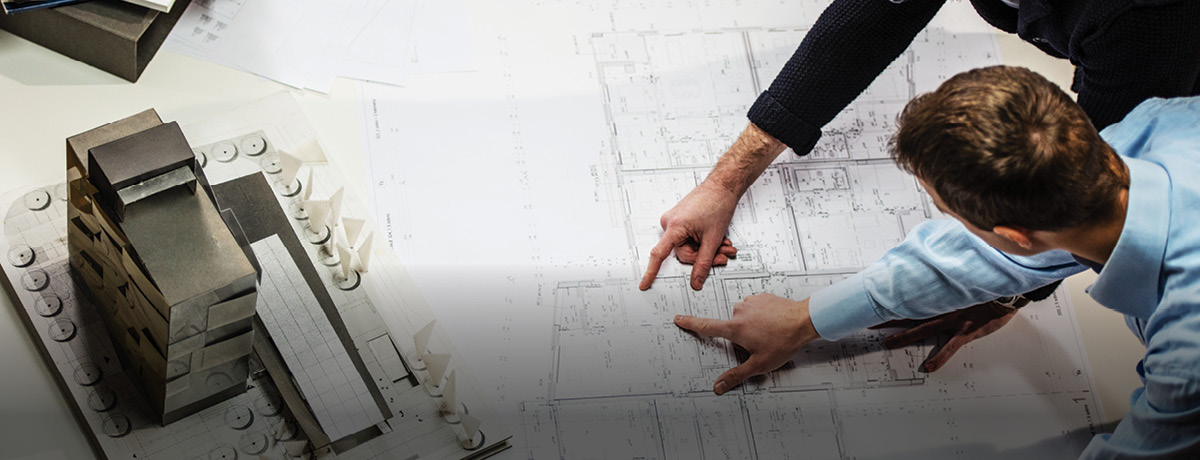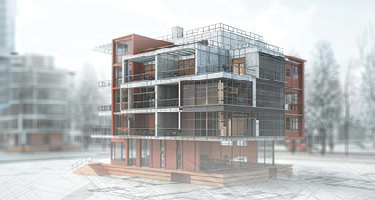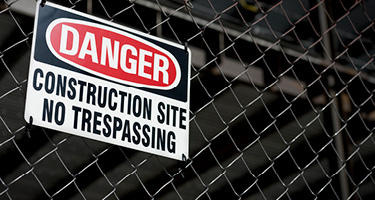In a typical construction project, the architect’s final documents are incorporated into the contract between the owner and the contractor, who is required to build in strict accordance with the documents and is liable for any damages resulting from unauthorized deviations from the plans and specifications.
To comply, the contractor provides the architect with shop drawings detailing how each portion of the project will be built and seeks clarification—in the form of Requests for Information (RFIs)—of any incomplete or conflicting elements in the plans and specifications. The architect reviews and either approves or rejects the shop drawings and responds to the RFIs. If modifications are necessary, they must be incorporated into the construction documents, and the owner must sign a change order authorizing the alteration.
It sounds simple and straightforward— but it’s time-consuming and can lead to schedule delays and conflicts among the contractor, architect, and owner. As a result, the architect may informally agree to certain design alterations without obtaining a signed change order or incorporating the changes into the plans as quickly as is needed to prevent schedule hiccups. When this happens, the contractor will often build off the new designs, assuming that the changes will be made official and a change order signed. This process, known as operating within the “gap”—the period in which the construction documents don’t accurately reflect the design changes and no revised order has been signed—raises three important questions:
- whether the architect or contractor will be liable if the changes are not subsequently incorporated into the construction documents and a change order is not signed;
- whether proactive contractual provisions should be included to address this potential “gap liability”; and
- whether the architect and contractor should develop and implement new processes to expedite design incorporation.
Building within the gap period is common in the construction industry. Despite its prevalence, though, liability issues are certain to arise when the architect fails to integrate the design changes or the owner refuses to issue a signed change order. The contractor is in an untenable situation here: If he or she fails to build during the gap period and schedule delays ensue, the owner might require the contractor to accelerate the project, which will cost the contractor money. Depending on the severity of the delay, the contractor may fail to meet the project’s “substantial completion” date, and damages will begin to accrue.
Conversely, if the contractor relies on the probability that the architect’s informal approval of design changes is sufficient and that the owner will sign a change order, and continues working on the project to stick to the schedule, the contractor assumes substantial liability.
Contractors’ potential liability for building during the gap period is well-documented in AIA A201, from 2017. In fact, several provisions shift the responsibility of performing certain design activities from the architect to the contractor. Even though the contractor has no ability to force the architect to incorporate design changes or require the owner to execute a change order, he or she must keep the project running smoothly and on time or risk incurring liability.
This situation is often exacerbated by the architect complaining to the owner about the contractor—and then, because no contractual relationship exists between the architect and contractor, the latter seeks assistance from the owner to elicit cooperation from the former. Moreover, given that Section 3.1.2 of AIA A201 (2017) requires the contractor to “perform the work in accordance with the contract documents,” the contractor’s failure to do so is a breach of contract that enables the owner to pursue all available remedies.
Should contractual provisions require the owner, architect, and contractor to cooperate and collaborate? In Dallas/Fort Worth International Airport Board v. INET Airport Systems (2016), the Fifth Circuit found that in contracts in which the risk of defects is allocated between the owner and contractor, a duty to cooperate may be implied. Although the Fifth Circuit did not expressly extend the implied duty to architects, one can argue that this implied duty must be extended to them as well to foster collaboration among a project’s key players.
The "GAP"-the period in which the construction documents don't accurately reflect the design changes and no revised order has been signed."
In this instance, INET had contracted with the Dallas/Fort Worth (DFW) International Airport Board to provide rooftop air-conditioning units to passenger boarding bridges that used 30 percent ethylene glycol/water (EG/water) supplied by DFW’s piping system. Because INET was required to alert DFW immediately of any errors or omissions in the plans or specifications, the organization expressed concern at the pre-construction meeting that the units specified in the plans might not function properly with EG/water. After getting no immediate response from DFW, INET resubmitted its concern via an RFI to the architect. DFW, INET, and the architect then had extensive discussions to try to reach a resolution—but they couldn’t, and the issue went unaddressed.
Failure to resolve this sticking point resulted in INET missing its substantial completion date, assessment of liquidated damages, and a bond claim. INET and DFW subsequently sued each other for, among other things, breach of contract.
Analyzing the contract, the Fifth Circuit concluded that while INET was required to inspect the plans and specifications, assume responsibility for compatibility during construction, comply with the contract documents, and notify DFW of any defects, DFW was itself required to provide change orders to remedy any defects INET discovered and to assume responsibility for correction of all design defects.
Because the contract required all design adjustments to be made via change order, which necessitated a signature from both parties, the contract implied the imposition of a duty to cooperate on both INET and DFW. Upon remand, the jury concluded that DFW had breached its duty to cooperate because it “intentionally conducted itself in such a way that prevented [itself] and INET from reaching an agreement about how to address the defects.”
Innovative owners, architects, and contractors will eventually recognize the wisdom of implementing a collaborative tripartite agreement focused on delivering the project on time and within budget. To ensure this, expediting coordination of the design will give the design team enough time to identify and resolve conflicts and incorporate agreed-upon changes without delaying overall coordination or affecting the schedule. This requires the owner to agree with the expedited process, agreeing as well that the contractor’s reliance on it shall not constitute a breach of their pact. Although this will vary by project, pertinent features of the three-party agreement will likely include a weekly meeting of the contractor, subcontractors, and design team to review any new design conflicts. To do so, they must rely on information from the contract documents, and if applicable, in the building information management (BIM) construction coordination model to finalize the project’s design coordination and produce final shop drawings for approval and subsequent material fabrication.
Once design coordination is finalized for a particular portion of the project, the contractor and design team will acknowledge completion of the review and necessary alterations via email with a “read receipt” to indicate mutual agreement that the conflicts have been resolved even though the changes have not yet been incorporated into the construction documents. If the owner, contractor, or architect fails to dispute the emailed information within a specified number of days, the parties will be deemed to have accepted the design alteration as presented, and the design modifications will be considered as amendments to the contract documents.
To formalize the design changes, the contractor will prepare and circulate a spreadsheet to the architect and owner noting the status of such changes. In this way, absent written disagreement from the owner or the architect, the contractor may rely upon the accuracy of these design changes and finalize shop drawings accordingly, as well as proceed with material fabrication. Under this arrangement, three-party communication and collaboration will not only be enhanced but also handled in real time. Moreover, the contractor and architect will thereby forgo a confrontational, finger-pointing relationship in favor of interactions that benefit their mutual client, the owner.
This is not the only mechanism to resolve the liabilities and tension inherent to a fast[1]tracked, complicated commercial project. It is, however, a reminder that when real problems exist in current documentation and other practices, our job as counselors is to think creatively and attempt to devise commonsense resolutions that best serve our clients’ respective interests.
Tonya Johannsen, a partner at Estes Thorne & Carr, PLLC, has extensive experience representing construction and architectural professionals, both in the negotiation of complicated transactions and in complex litigation. She previously served as General Counsel for the Beck Group, directing the legal function of the full-service design builder in its nine offices. Her responsibilities included oversight of all transactional matters as well as proactive resolution of disputes including those related to architectural issues, cumulative impact and delay claims, lien priorities, owner claims and subcontractor disputes. She is a frequent speaker on construction law topics, strategies to achieve a successful interface between General Counsel and outside counsel, and empowering women in the practice of law.
































